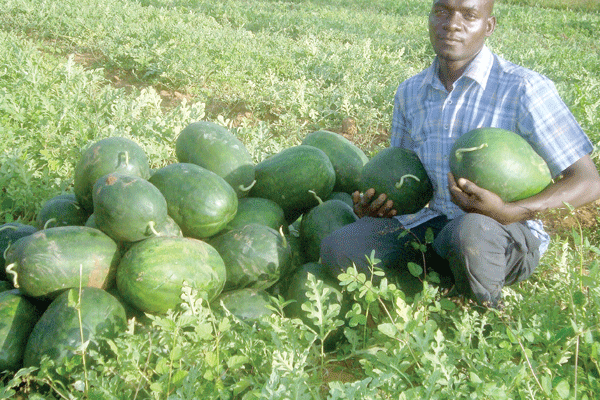Blossom-end rot
This is caused by calcium deficiency in the flower (blossom) end of the fruit. It is worse in hot, dry, windy conditions where moisture stress is more likely to occur. Symptoms include young fruit dropping off and brown rotting lesions appearing at the blossom end of older fruit. Salinity of soil or irrigation water may also promote blossom end rot. Good water management and sufficient soil calcium availability will usually address the problem.
Internal cracking
This is caused by cool temperatures during early fruit-filling period. Other influences are stop-start growth, excess nitrogen, low boron levels and heavy, infrequent watering at fruit fill. Affected melons tend to be flattened in shape and feel lighter than usual.
Spongy end
This occurs in melons that have been poorly pollinated. These melons may turn yellow and drop off the vine early in their development, or partly develop with the blossom end soft and spongy. This area is also slightly pointed. Internally, there is very poor seed development at the spongy end.
Sunburn
This can be a major problem in dark or darker striped melons. It is rarely seen in light-coloured melons. Sunburn can also occur in melons that have been stacked in the field with their underside facing upward.
Additional Info:
Anthracnose – This seed-borne fungus is hard to detect initially, as it may only appear as small spots on your plants and fruits. As it grows, these spots expand and turn black or gray and new sunken areas may appear on your fruit. Crop rotation combined with an aggressive treatment of neem oil will help preserve this and future harvests from anthracnose.
Bacterial Fruit Blotch – The bacterium Acidovorax avenae subspecies citrulli is often responsible for seedlings and young plants and fruits with water-soaked spots that spread and become necrotic. The leaves may brown, but the most dramatic sign is on fruit. The rind may crack and ooze a sticky, yellow liquid. Copper fungicide can control symptoms if it’s applied as soon as symptoms of bacterial fruit blotch are detected.
Downy Mildew – Downy mildew is notable for the angular leaf spots it creates as it works its way through watermelon leaves. They may start as yellow areas, but soon turn brown with purple spores on the undersides of infected leaves. Fortunately, downy mildew won’t attack fruit, but it can reduce yields by weakening your plants. Neem oil can control this nasty mildew.
Gummy Stem Blight – Older tissues are generally affected more often than new ones when gummy stem blight fungus is involved. Black, wrinkled spots on leaves and dark or sunken areas on stems and fruits are the first signs of disease. Under humid or wet conditions, affected plants rapidly collapse. Control is difficult, but copper fungicides can be effective if used as soon as gummy stem blight appears.
Powdery Mildew – One of the most common diseases of plants in general, powdery mildew doesn’t spare watermelons. Leaves will appear to have a white powdery substance on them when the infection is active, though fruits aren’t generally affected. As the powdery mildew moves through the plant, leaves brown and die, leaving fruits to sunburn and weakening plants. Neem oil is an excellent treatment, but increasing air circulation around your watermelon plant by pruning can be equally effective.

